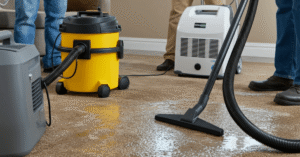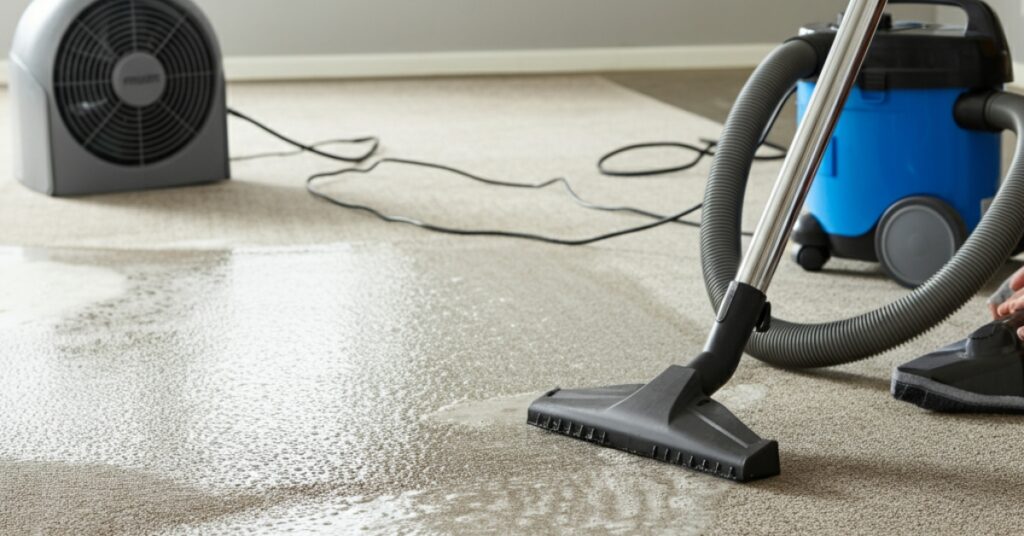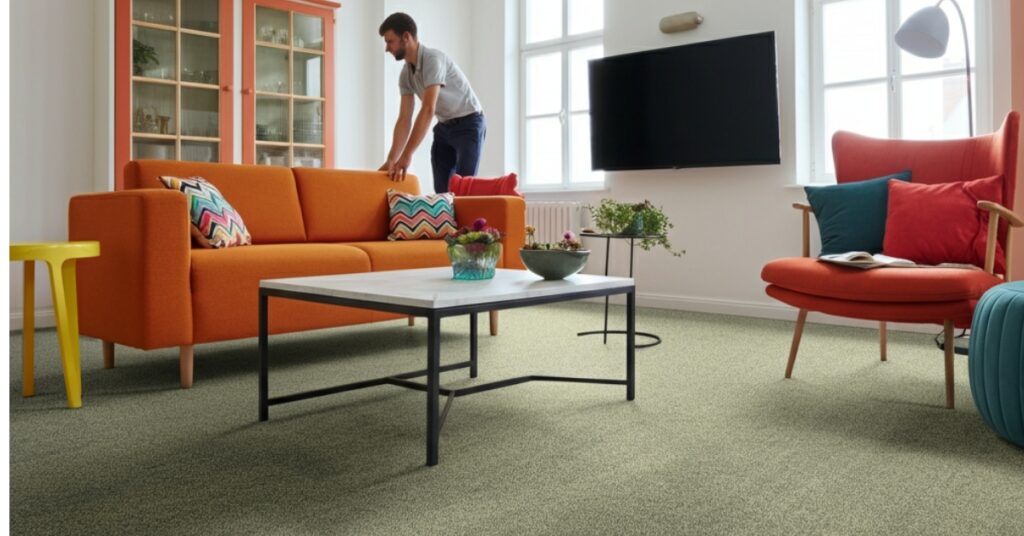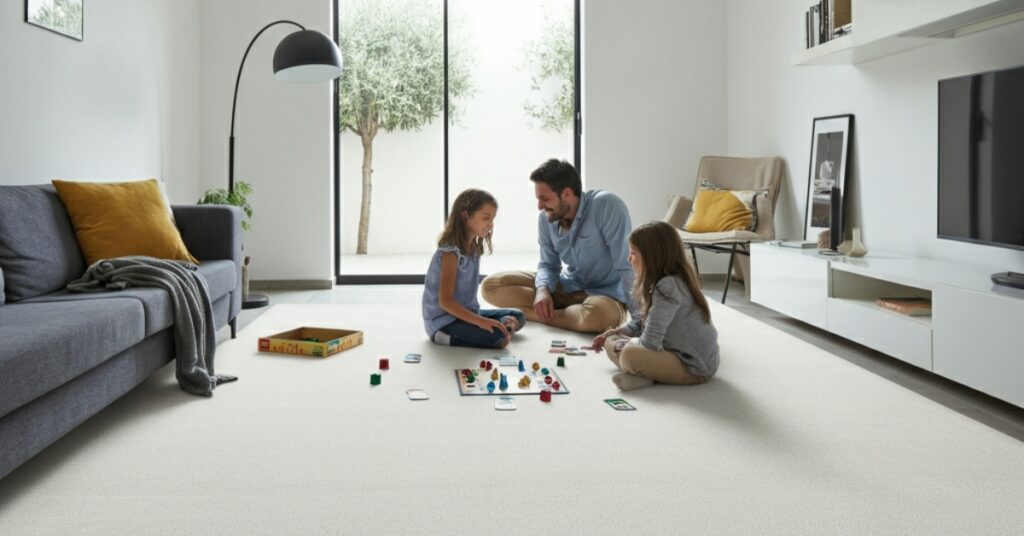As an Amazon Associate, I earn from qualifying purchases.
Carpet replacement frequency depends on several key factors, but most residential carpets should be changed every 5-10 years with proper maintenance. However, the answer to how often should a carpet be changed varies significantly based on carpet quality, foot traffic, household composition, and maintenance practices.
Understanding the right timing for carpet replacement helps homeowners maintain healthy indoor environments while maximizing their flooring investment. Furthermore, recognizing the signs that indicate replacement time can prevent issues like poor air quality, persistent odors, and decreased home value that often accompany worn-out carpeting.
Signs Your Carpet Needs Replacement
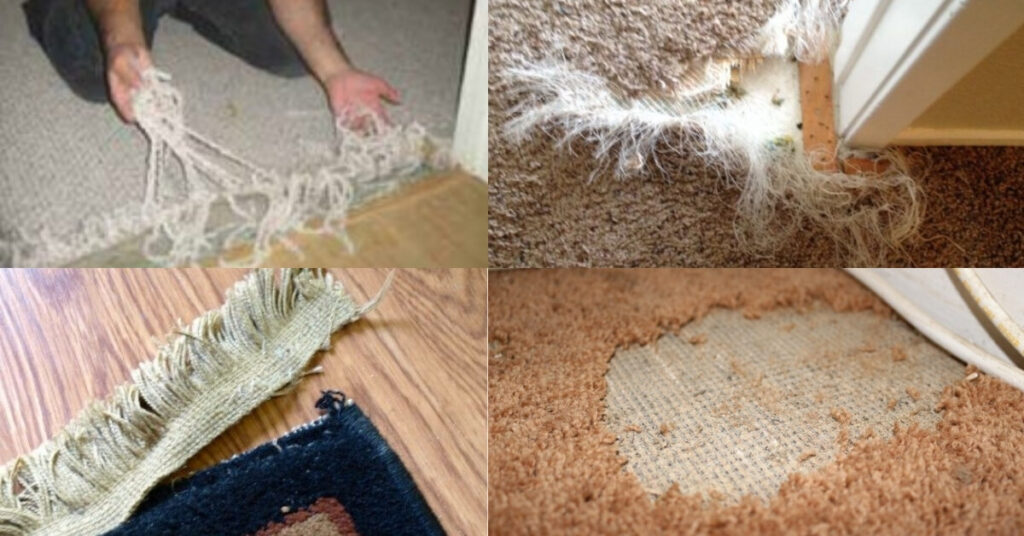
Visible Wear and Damage Patterns
Carpet showing significant wear patterns, permanent stains, or physical damage typically needs replacement regardless of age. High-traffic areas often develop matted fibers, worn patches, or visible pathways that cleaning cannot restore. Additionally, frayed edges, loose seams, or carpet separation from tack strips indicate structural deterioration requiring replacement.
Burn marks, large tears, or extensive pet damage also signal immediate replacement needs. These issues not only affect appearance but can create safety hazards and harbor bacteria or allergens that regular cleaning cannot eliminate.
Persistent Odors and Allergen Concerns
Carpets that retain odors despite professional cleaning often require replacement, especially when dealing with pet accidents, smoke damage, or moisture-related issues. Persistent smells typically indicate deep contamination that has penetrated the carpet backing and padding. Moreover, old carpets can trap allergens, dust mites, and other irritants that contribute to respiratory problems and poor indoor air quality.
Households with allergy sufferers should consider carpet replacement more frequently, particularly when symptoms worsen despite regular cleaning efforts. Fresh carpeting with proper padding and installation significantly improves indoor air quality and reduces allergen accumulation.
Carpet Lifespan by Quality and Type
Budget vs. Premium Carpet Durability
Budget carpets typically last 3-5 years in average households, while premium carpets can maintain appearance and functionality for 10-15 years or more. The construction quality, fiber density, and manufacturing standards directly impact longevity and determine how often should a carpet be changed. Higher-quality carpets feature better backing materials, superior fiber treatments, and enhanced stain resistance that extend usable life significantly.
Investment in quality carpeting often proves cost-effective over time, as premium options require less frequent replacement and maintain better appearance throughout their lifespan. However, budget options may suit rental properties or temporary housing situations where long-term durability is less critical.
Different Carpet Fiber Performance
Nylon carpets generally offer the longest lifespan, often lasting 12-15 years with proper care, making them excellent choices for high-traffic areas. Polyester carpets typically require replacement every 5-8 years, while olefin carpets may need changing every 3-5 years depending on usage patterns.
Wool carpets can last 20-25 years with exceptional care but require more maintenance and higher initial investment. Natural fiber carpets like sisal or jute typically need replacement every 5-7 years due to their susceptibility to moisture and wear damage.
Traffic Patterns and Usage Impact
High-Traffic Area Considerations
Entryways, hallways, and living rooms experience heavy foot traffic that accelerates carpet wear and may require replacement every 3-7 years. These areas show wear patterns first and often need replacement before carpets in bedrooms or formal dining rooms. Therefore, considering traffic patterns when determining how often should a carpet be changed helps prioritize replacement needs and budget planning.
Commercial-grade carpets in high-traffic residential areas can extend replacement intervals by 2-3 years compared to standard residential carpeting. Strategic placement of area rugs and runners also helps protect underlying carpet and extend its usable life.
Low-Traffic Room Longevity
Bedrooms, guest rooms, and formal spaces typically allow carpet to last 8-12 years or longer with minimal maintenance. These areas experience less soil accumulation, reduced fiber crushing, and fewer spills that contribute to premature carpet deterioration. Consequently, homeowners can often delay replacement in low-traffic areas while addressing high-wear zones first.
Regular rotation of furniture and strategic placement help distribute wear evenly across low-traffic carpets. This practice can extend carpet life significantly and delay the need for complete replacement.
Maintenance Impact on Replacement Frequency
Professional Cleaning Benefits
Regular professional carpet cleaning can extend carpet life by 3-5 years compared to minimal maintenance approaches. Professional cleaning removes deep-seated dirt, allergens, and contaminants that regular vacuuming cannot reach. Additionally, professional treatments can restore carpet appearance and eliminate odors that might otherwise necessitate early replacement.
Most carpet manufacturers recommend professional cleaning every 12-18 months to maintain warranty coverage and optimal performance. This investment in maintenance significantly reduces how often should a carpet be changed while preserving indoor air quality and appearance standards.
Daily Care and Protection Strategies
Consistent vacuuming, immediate spill cleanup, and protective measures like door mats dramatically impact carpet longevity. Homes with rigorous maintenance routines often achieve maximum carpet lifespan, while neglected carpets may require replacement years ahead of schedule.
Strategic use of area rugs in high-traffic zones, furniture pads to prevent indentations, and regular rotation of heavy furniture help distribute wear evenly. These simple practices can add several years to carpet life without significant additional expense.
Health and Safety Replacement Indicators
Indoor Air Quality Concerns
Carpets older than 10 years may begin releasing volatile organic compounds (VOCs) as backing materials and adhesives deteriorate. Households with respiratory sensitivities should consider replacement when carpet age coincides with increased allergy symptoms or breathing difficulties. Furthermore, old carpets can harbor mold, bacteria, and dust mites that cleaning cannot completely eliminate.
Regular air quality testing can help determine when carpet replacement becomes necessary for health reasons. Carpets that consistently fail to respond to deep cleaning may require replacement regardless of visual appearance to maintain healthy indoor environments.
Structural and Safety Issues
Loose carpet areas, separated seams, or lifting edges create tripping hazards that require immediate attention. These safety concerns often necessitate replacement even when carpet appears otherwise serviceable. Additionally, carpet padding deterioration can cause uneven surfaces and potential injury risks.
Water damage or flooding typically requires carpet replacement within 24-48 hours to prevent mold growth and structural damage. Even minor moisture issues can compromise carpet integrity and create long-term health and safety concerns.
Cost-Benefit Analysis of Carpet Replacement
Timing Replacement for Maximum Value
Strategic timing of carpet replacement can maximize both financial and practical benefits. Planning replacement during off-peak seasons often results in better pricing and contractor availability. Moreover, coordinating carpet replacement with other home improvements can reduce overall project costs and minimize disruption.
Homeowners should evaluate replacement costs against ongoing maintenance expenses and reduced home value from worn carpeting. Sometimes earlier replacement proves more economical than continued maintenance of deteriorated carpeting.
Investment in Quality vs. Frequent Replacement
Higher upfront investment in quality carpeting often reduces long-term costs by extending replacement intervals significantly. Premium carpets with superior warranties and performance characteristics can cost less per year of service than budget options requiring frequent replacement.
Evaluating total cost of ownership, including maintenance, replacement frequency, and performance characteristics, helps determine optimal carpet investment strategies. This analysis directly impacts how often should a carpet be changed and overall flooring budget planning.
Room-Specific Replacement Guidelines
Kitchen and Bathroom Carpet Considerations
Kitchen and bathroom carpets face unique challenges from moisture, spills, and temperature fluctuations that typically require replacement every 2-5 years. These environments accelerate carpet deterioration and increase risks of mold, bacteria, and odor development. Therefore, alternative flooring options often prove more practical and cost-effective in moisture-prone areas.
When carpet is used in these spaces, choosing moisture-resistant options and ensuring excellent ventilation can extend replacement intervals. However, many homeowners transition to hard surface flooring in these areas for improved hygiene and reduced maintenance requirements.
Bedroom and Living Area Standards
Master bedrooms and formal living areas can often maintain carpet for 8-12 years with proper care, while family rooms and children’s bedrooms may require replacement every 5-8 years. Activity levels, spill frequency, and foot traffic patterns directly influence replacement timing in these spaces.
Pet ownership, young children, and entertaining frequency all accelerate carpet wear in living areas. Homeowners should adjust replacement expectations based on lifestyle factors and usage patterns specific to each room.
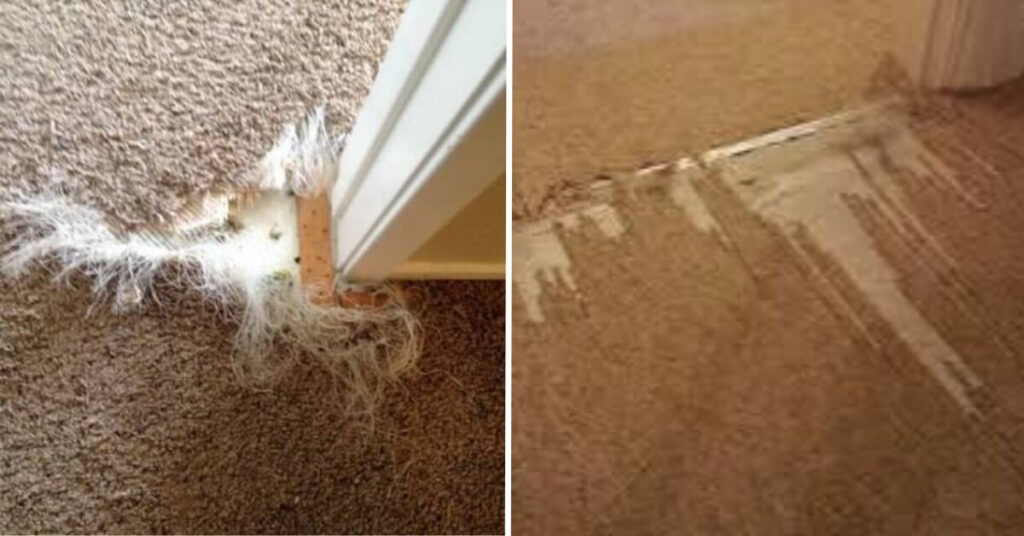
Frequently Asked Questions
1. How often should carpet be replaced in rental properties?
Rental property carpet typically needs replacement every 3-5 years due to higher turnover and varied maintenance standards. This frequency helps maintain property value and tenant satisfaction.
2. Does carpet padding need replacement with carpet?
Yes, carpet padding should be replaced with carpet in most cases. Old padding loses support and can harbor odors or moisture that affect new carpet performance.
3. Can carpet last longer than 10 years?
High-quality carpet with exceptional maintenance can last 12-15 years or more, particularly in low-traffic areas with careful upkeep and professional cleaning.
4. Should I replace all carpet at once or room by room?
Room-by-room replacement allows budget flexibility but may create color and texture matching challenges. Whole-house replacement ensures consistency but requires larger upfront investment.
5. How does pet ownership affect carpet replacement frequency?
Pet ownership typically reduces carpet lifespan by 2-3 years due to accidents, scratching, and increased soil accumulation requiring more frequent replacement.
6. What carpet features extend replacement intervals?
Stain resistance treatments, higher fiber density, quality backing materials, and commercial-grade construction all extend carpet life and reduce replacement frequency.
7. Can carpet cleaning extend replacement timelines?
Regular professional cleaning can extend carpet life by 3-5 years compared to minimal maintenance, making it a cost-effective strategy for delaying replacement.
8. How do I know if my carpet is beyond cleaning?
Carpet requiring replacement shows persistent odors, visible wear patterns, structural damage, or health concerns that cleaning cannot resolve effectively.
Final Verdict
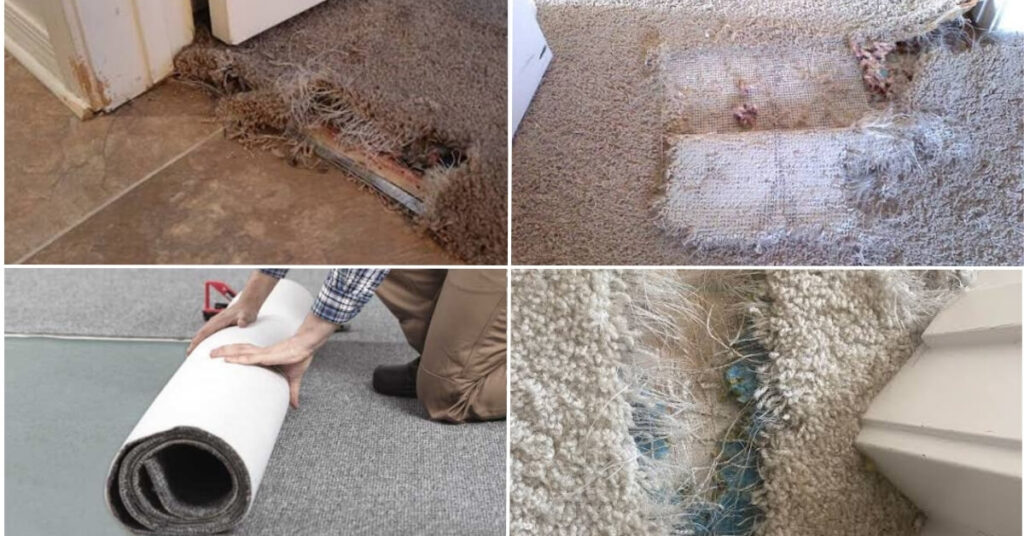
Determining how often should a carpet be changed requires careful consideration of multiple factors including carpet quality, household usage patterns, maintenance practices, and health considerations. Most homeowners find success with replacement intervals between 5-10 years, adjusting timing based on specific circumstances and carpet performance.
Regular assessment of carpet condition, combined with proactive maintenance and realistic expectations, helps optimize replacement timing for both financial and practical benefits. By understanding these factors, homeowners can make informed decisions that balance cost considerations with comfort, appearance, and health requirements for optimal long-term satisfaction.
As an Amazon Associate, I earn from qualifying purchases.

